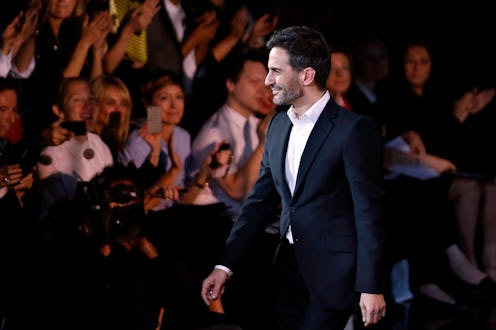Fashion
Why It's Ok That Marc By Marc Jacobs Is No More
When in the locker room of my gym last Thursday, a girl complimented my quilted nylon Marc by Marc Jacobs backpack and asked, “Is it Marc Jacobs?” to which I responded, “Marc by Marc Jacobs, less expensive, you know?” So when the news then broke that Marc by Marc Jacobs is being discontinued, I initially found it ironic.
Upon hearing that the brand would be no longer, I thought back to the gym conversation. My complimenter had spoken as though there was no difference between Marc Jacobs, the luxury line, and its less expensive and more accessible little sister — and I had felt a need to distinguish between the two by acknowledging the difference in price points. The conversation reveals one of the reasons why the brand is being folded into the main one: According to Marc Jacobs CEO Sebastian Suhl, the company wants to provide customers with a more consistent retail experience by selling products not only at contemporary and luxury price points, but in the middle area in between — think mid-three digit pricing — a price point at which its current products do not fall.
Since its founding in 2001, Marc by Marc Jacobs has been a mainstay in upscale department store chains, where it often has its own section on both the accessories and contemporary floors. Perhaps because of this, I’ve been familiar with the brand since middle school, when it vied for Coach as the “designer bag” to have among my tween peers. I was partial to the Coast wristlet, and my Marc by Marc Jacobs backpack (which I bought this past November) is the first and only thing I own by the brand.
The best way to describe my longtime opinion of the brand is by equating it to an acquaintance. It’s like an old friend I’ve known since I was younger but with whom I’ve never hung out one-on-one. I think they’re a perfectly nice person, but we’ve never really clicked so I don’t think to call them. I don’t dislike them, but I don’t love them either. Until my backpack, which I bought for its combination of practicality, affordability, and overall stylishness, I’ve never loved anything from Marc by Marc Jacobs enough to buy for myself. I’m familiar with its signature accessories — the whiskered mouse flats, Classic Q bags, and labeled canvas totes — but I’m usually tempted by something else. As for its clothes, I had always thought they had the same quasi-retro look season after season. Nothing ever stood out until Katie Hillier and Luella Bartley took charge in 2013.
With Hillier as creative director and Bartley womenswear design director, the line rebranded itself as MBMJ, a young and hip collection fit for the social media age (they were known to hold Instagram casting calls). I remember scrolling through my Instagram feed when the duo unveiled the first collection at the Fall 2014 shows and initially being confused: Was it a new collection brand or a recycled one? It took me a minute to put together that MBMJ was the same thing as Marc by Marc Jacobs. The clothes were a complete departure from the blandness that the brand had fallen victim to in earlier seasons. From that collection up to the most recent Fall 2015 one, the line had a cool London touch that I wanted to get my hands on.
The revamp was similar to what Coach did in Fall 2014, when a British designer, Stuart Vevers, took the helm of the accessories-first brand and debuted its first clothing line. While Vevers differed from Hillier and Bartley in that he wasn’t inheriting a line to make over, the resulting urban-cool-girl vibe was the same.
Somehow, though, Hillier and Bartley failed to disassociate MBMJ from shoppers’ age-old conceptions of the brand. Its products have spent so much time on the floors of Bloomingdales and Saks across the country that, and correct me if I’m wrong, most mall shoppers associate it with utilitarian quilted totes and cute fuzzy shoes rather than with trend items like polka dot bandeaus and rubber Chelsea booties. They were comfortable with the sameness of the products, so when Hillier and Bartley gave it a laudable but risky creative touch up, perhaps folks weren’t ready for it. In the already competitive landscape of contemporary womenswear, maybe there isn’t a market for MBMJ.
By folding Marc by Marc Jacobs into the larger brand umbrella, the company is making the main line even more robust. When Marc Jacobs left Louis Vuitton after 16 years in October 2013 to focus on his own line, rumors circled that one of his main reasons for doing so was to bolster the company for its IPO. The closing of MBMJ could be the last step in the process. It’s an exciting time for the brand, for Jacobs himself, and for shoppers of all incomes who will be able to have a touch of plain and simple Marc Jacobs, be it at the low, middle, or high price points.
Images: Getty
